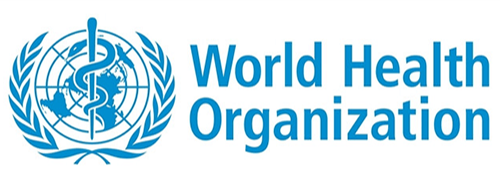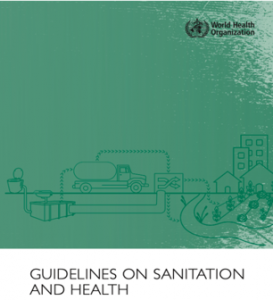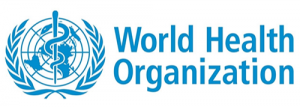SSP Library
This library presents all resources on Sanitation Safety Planning and related topics, including documents, training materials, videos, links to key webpages and other tools.
Key documents
Here, you can find the SSP manual, that presents the SSP process in six modules, accompanied by a number of guidance notes, examples and tools. The SSP worked example describes a hypothetical case of SSP in a small municipality called Newtown in an imaginary country called the Republic of Sanitola. Finally, you can find the WHO Guidelines on Sanitation and Health, an authoritative health-based guidance on sanitation that results in better health.
Training Materials
In this section, you will find all the resources contained in the SSP Training Package, designed to support aspiring SSP trainers while designing, preparing and conducting SSP trainings. Read the SSP Trainer’s Guide to learn how to put together a successful SSP training.
Manual:
Powerpoint documents – PPTs:
- Introductory session
- Module 1: Prepare for sanitation safety planning
- Module 2: Describe the sanitation system
- Module 3: Identify hazardous events, and assess existing control measures and exposure risks
- Module 4: Develop and implement an incremental improvement plan
- Module 5: Monitor control measures and verify performance
- Module 6: Develop supporting programmes and review plans
Worksheets:
- Worksheet 1: 3-day SSP training, participants worksheet A4
- Worksheet 2: 3-day SSP training, PDF cover sheet handouts A4
- Worksheet 3: 3-day SSP training, table group worksheet A3
PPTs and the trainer guide are prepared using the Font Source Sans Pro. It is highly recommended to download this open source font at: https://fonts.google.com/specimen/Source+Sans+3
You will get a much better image, as the guidelines and power points are designed using this font!
Self-Study Videos
These are the video lessons that make up the Online Training course. Watch our trainers explaining each module of the SSP methodology.
- Introduction to SSP
- Module 1: Prepare for sanitation safety planning
- Module 2: Describe the sanitation system
- Module 3: Identify hazards, hazardous events, and assess existing controls and exposure risks
- Module 4: Develop and implement an incremental improvement plan
- Module 5: Monitor control measures and verify performance
- Module 6: Develop supporting programs and review plans
Guidelines on safe use of wastewater, greywater, and excreta
Guidelines
- Vol 1. Policy and regulatory aspects
- Vol 2. Wastewater use in agriculture
- Vol 3. Wastewater and excreta use in aquaculure
- Vol 4. Excreta and greywater use in agriculture
Info Kit
- Factsheet about wastewater use in agriculture
- Factsheet for agricultural policymakers
- Factsheet for farmers and extension workers
- Factsheet for the research community
- Guidance note for programme managers and engineers. Vol 2
- Guidance note for programme managers and engineers. Vol 3
- Guidance note for programme managers and engineers. Vol 4
- Health risks and opportunities in agricultural water planning and management
- IWMI recycling realities
- Water use and reuse for urban agriculture
Sanitation inspections for sanitation systems
Further reading materials
- STENSTRÖM et al. 2011: Microbial exposure and health assessments in sanitation technologies and systems
- STRANDE et al. 2014: Faecal sludge management
- TILLEY et al. 2012: Compendium of sanitation systems and technologies
- UNICEF and WHO 2020: State of the World´s sanitation – An urgent call to transform sanitation for better health, environments, economies, and societies.
- WHO 2019: Sanitation and climate change – Discussion paper
- WHO-UNICEF JMP 2022: Guidance for monitoring safely managed on-site sanitation (SMOSS) – Draft prepared for Phase 2 pilots
Weblinks
- WHO – Water, sanitation and hygiene
- WHO Sanitation safety resources
- WHO Sanitary inspection for sanitation systems
- Shit Flow Diagram (SFD) initiative
- e-Compendium of sanitation systems and technologies (eawag)
- Sustainable sanitation and water management toolbox
- Fecal sludge management toolbox
- SaniPath – Assessing public health risks from unsafe fecal sludge management
- JMP – Joint Monitoring Programme




